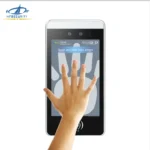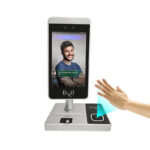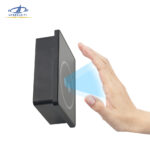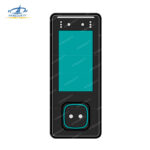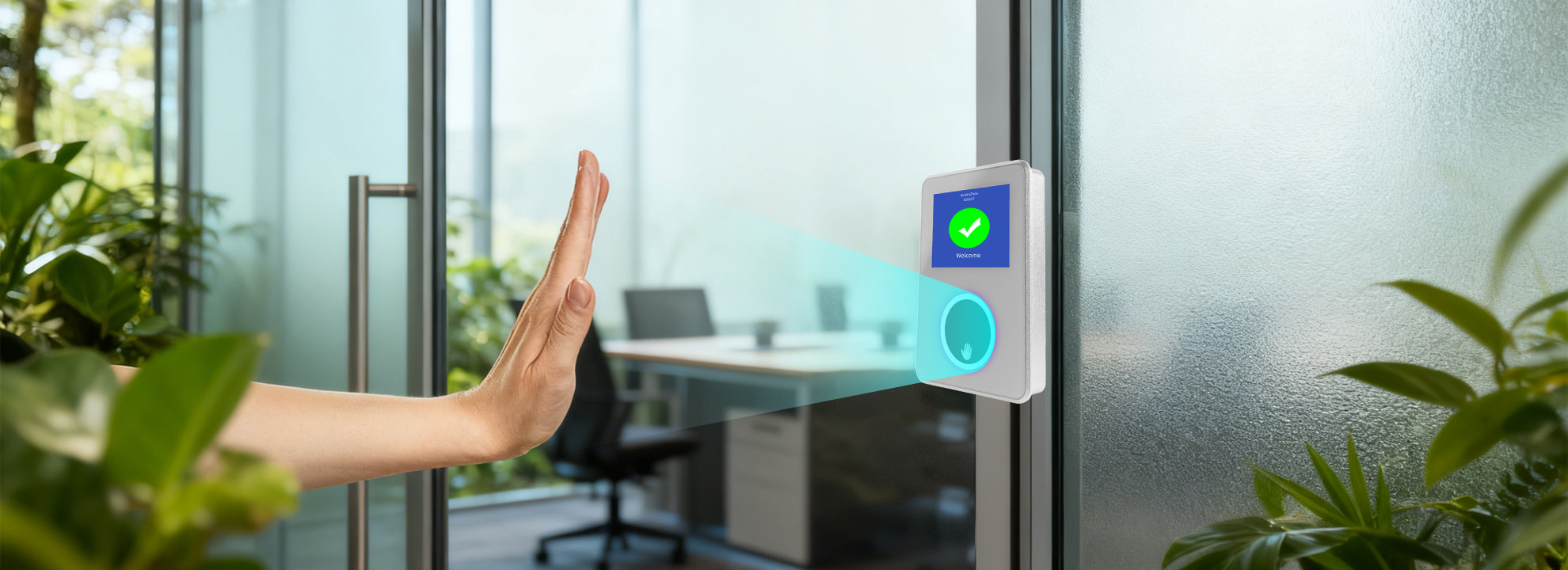
A palm vein scan is a cutting-edge biometric technology that identifies individuals by analyzing the unique vein patterns inside their palms. Unlike fingerprints or facial features, palm vein patterns are internal, invisible to the naked eye, and almost impossible to replicate — making this technology one of the most secure and accurate biometric solutions used today.
With the global demand for contactless, hygienic, and high-security authentication solutions growing rapidly, palm vein recognition is increasingly applied in access control, attendance management, healthcare, banking, payments, and smart terminals.
How Does Palm Vein Scanning Work?
Palm vein scanning uses near-infrared (NIR) light to capture the blood vessel patterns beneath the skin. Here’s how a typical scan works:
User hovers hand above the sensor
NIR light illuminates the palm
Deoxygenated hemoglobin absorbs the light, forming a dark vein pattern image
The system creates a digital biometric template
The template is compared with stored data for real-time identification
This entire process takes less than 0.5 seconds and offers exceptional accuracy — even better than many fingerprint or face recognition systems.
Palm Vein Scan Advantages (Why It Is So Secure)
Palm vein recognition is globally recognized for its performance and anti-spoofing capabilities. Here are its core strengths:
1. Contactless Recognition
Users do not touch the device, reducing wear-and-tear and preventing hygiene concerns — especially important in hospitals, schools, and public buildings.
2. Extremely High Security
Vein patterns are inside the body and require blood flow to be detected, making them:
Impossible to copy
Unaffected by surface injuries
Resistant to fake biometrics like photos, masks, or silicone molds
3. Accurate Even in Challenging Conditions
Unlike fingerprints which can fail due to dry, wet, oily, or damaged skin, palm veins stay stable.
4. Fast Authentication
Algorithms allow verification within milliseconds, even in high-traffic applications like turnstiles or large workforces.
5. Universal Usability
Works with:
Elderly users
Children
People with worn fingerprints
Outdoor and indoor environments
Comparison: Palm Vein Scan vs Other Biometrics
| Biometric Type | Contactless | Security Level | Точность | Spoofing Resistance | Limitations |
|---|---|---|---|---|---|
| Palm Vein Scan | Да | Very High | Very High | Excellent | Hardware cost slightly higher |
| Отпечаток пальца | No | Medium | High | Moderate | Easily affected by dry, wet, or damaged skin |
| Распознавание лиц | Да | High | High | Moderate | Impacted by lighting, masks, photos |
| Распознавание радужной оболочки глаза | Да | Very High | Very High | Very Strong | Higher cost; requires user alignment |
| RFID / Card | N/A | Low | Medium | Low | Cards can be lost, stolen, or shared |
Palm vein recognition delivers the ultimate balance of speed, privacy, security, and hygiene, making it an ideal upgrade for high-security authentication scenarios.
Where Is Palm Vein Scanning Used?
Palm vein recognition is rapidly expanding across multiple industries:
1. Access Control Systems
Used in:
Corporate office buildings
Factories
Government facilities
Data centers
Turnstile gates & swing gates
Contactless verification improves both security and traffic flow.
2. Time Attendance Systems
Companies use palm vein biometrics to avoid:
Buddy punching
Card sharing
Fingerprint failures
Devices like VP930Pro and MP30 are widely used for secure workforce management.
3. Biometric Payment & FinTech
Palm vein recognition enables:
Contactless payments
Bank account authentication
ATM identity verification
Since veins cannot be copied, financial institutions favor this biometric for secure transactions.
4. Healthcare & Patient Identification
Hospitals use palm vein scanning to:
Confirm patient identity
Prevent medication errors
Protect medical records
It ensures secure, hygienic verification in clinical environments.
5. Education and Campus Security
Used at:
School gates
Library entrances
Dormitories
Examination attendance
Offers safe and reliable student verification.
6. Government, Border Control & ID Management
Palm vein technology strengthens:
National ID programs
Immigration processes
Social welfare distribution
Its accuracy reduces fraud risks significantly.
Why Businesses Are Adopting Palm Vein Technology
Organizations switching to palm vein scanning cite these reasons:
Reduced maintenance cost (no surface sensors to clean)
Higher user acceptance (touchless = comfortable)
Better compliance with privacy rules (vein data cannot be captured secretly)
Long-term stability (vein patterns remain consistent for life)
Seamless integration with access control, attendance, and payment systems
For companies that need high security and smooth user experience, palm vein scanning is becoming the new standard.
Future of Palm Vein Biometrics
With the rise of AI, IoT, and contactless authentication, palm vein technology is moving toward:
AI-enhanced anti-spoofing
Edge computing palm vein devices
Palm payment terminals for retail
Hybrid biometrics (face + palm vein)
Mobile and wearable palm vein modules
This trend ensures palm vein scanning will play a key role in next-generation security systems.
Заключение
Palm vein scanning is one of the most secure, hygienic, and reliable biometric technologies available today. Its internal, unique vein patterns make identity fraud nearly impossible, while its contactless design improves user experience and device longevity.
From access control and attendance systems to healthcare, payments, and government ID solutions, palm vein recognition is quickly becoming the preferred biometric authentication method across industries.
Связаться с нами
We would love to speak with you.
Feel free to reach out using the below details.

